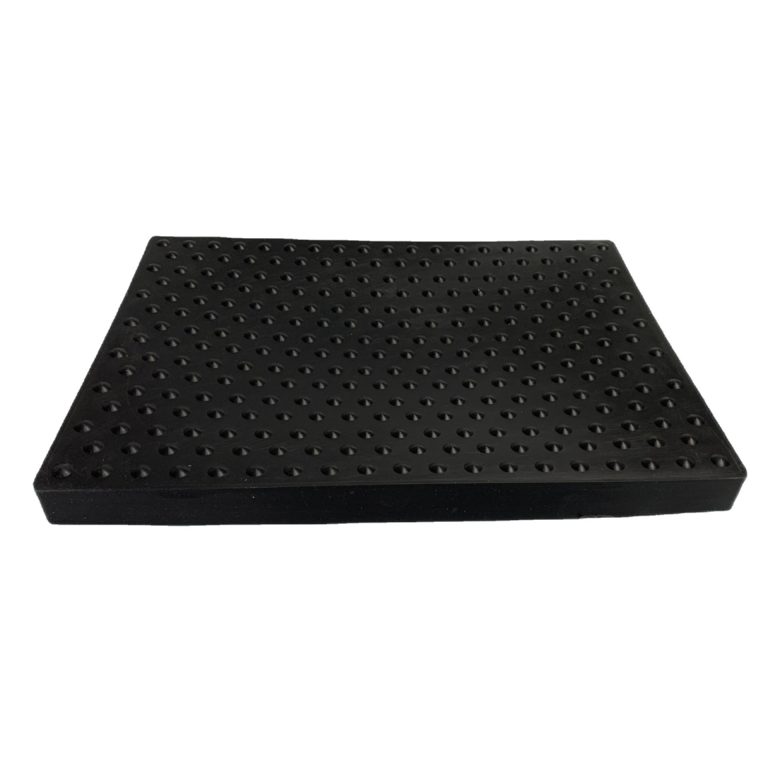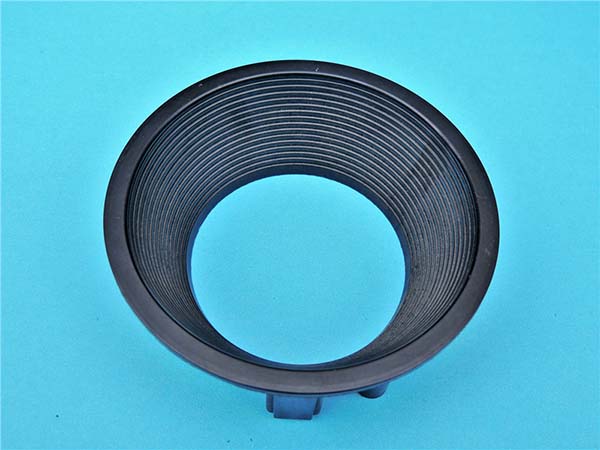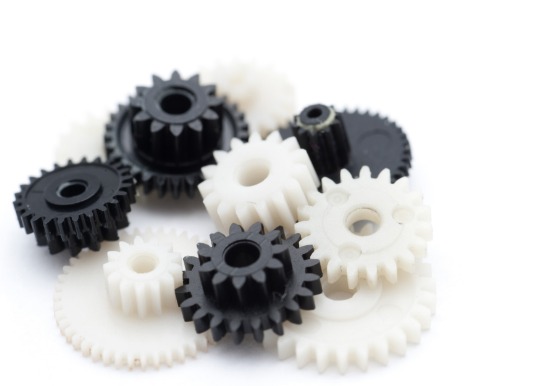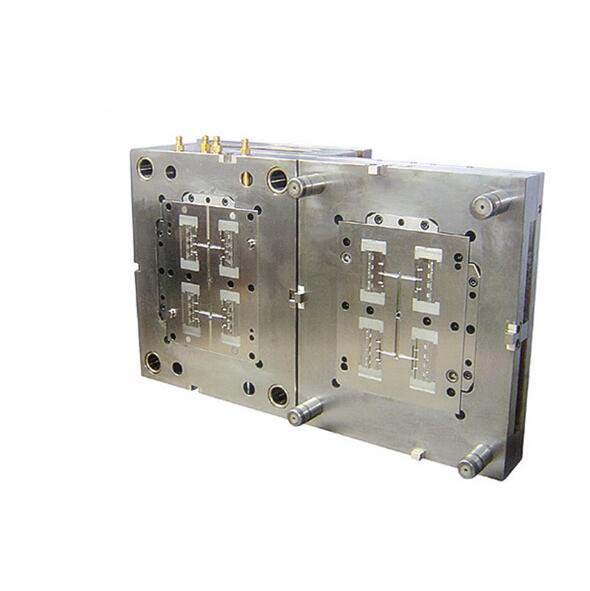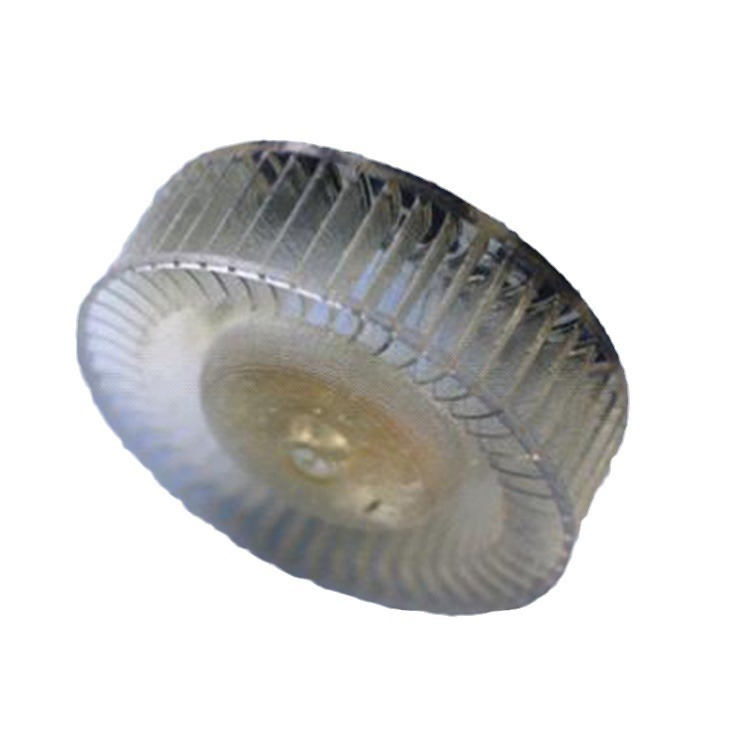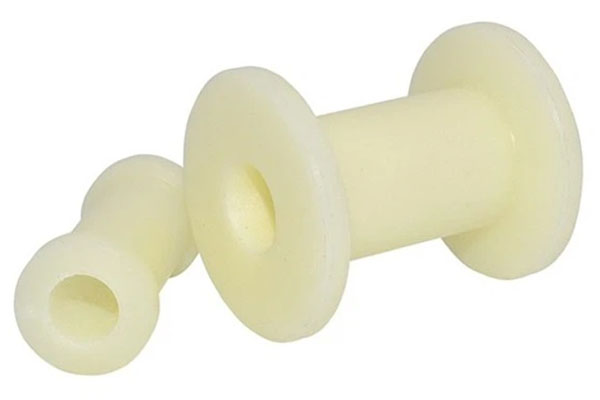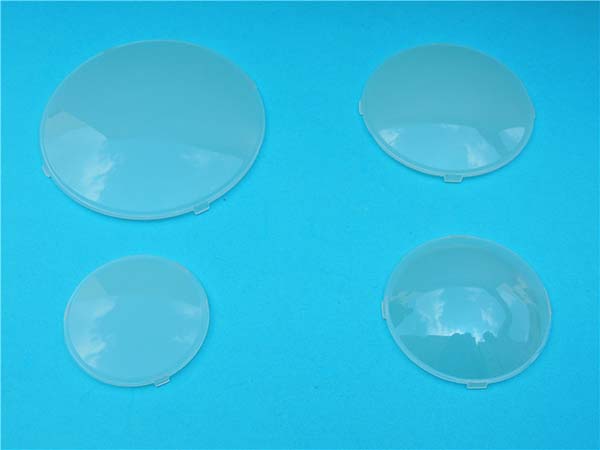Introduction to Mylar
Mylar, a well - known brand name for polyethylene terephthalate (PET) film, is a synthetic polymer that has carved a niche for itself in numerous industries due to its remarkable properties. Developed in the 1950s, this material has come a long way from its initial discovery and has become an essential component in various applications.
PET, the base material of Mylar, is a type of thermoplastic polyester. Its molecular structure consists of repeating units of ethylene terephthalate, which are linked together through ester bonds. This structure endows Mylar with a unique set of characteristics that set it apart from other materials. One of the most notable features of Mylar is its high strength - to - weight ratio. Despite being lightweight, Mylar films can withstand significant stress and tension without tearing or breaking easily. For instance, in comparison to traditional paper - based materials of similar thickness, Mylar can endure much greater tensile forces. A study by XYZ Research Institute found that Mylar films with a thickness of 0.05mm had a tensile strength of up to 200MPa, while a standard paper of the same thickness could only withstand around 20MPa.
Another key property is its exceptional transparency. Mylar films can transmit a high percentage of visible light, making them ideal for applications where visual clarity is crucial. In fact, Mylar films can have a light transmittance of over 90% in the visible light spectrum. This makes it a popular choice for packaging applications where the product inside needs to be clearly visible to the consumer, such as in the packaging of high - end chocolates or luxury cosmetics.
Mylar also exhibits excellent chemical resistance. It is resistant to a wide range of chemicals, including acids, alkalis, and organic solvents. This property allows Mylar to be used in harsh chemical environments without degradation. For Yigu Technology example, in the electronics industry, Mylar films are used to protect sensitive electronic components from chemical contaminants during manufacturing processes. When exposed to common industrial chemicals like hydrochloric acid (HCl) and sodium hydroxide (NaOH) in laboratory tests, Mylar showed no signs of corrosion or damage even after extended periods of exposure.
In addition, Mylar has good dimensional stability, which means it maintains its shape and size under different environmental conditions. It has a low coefficient of thermal expansion, so it does not expand or contract significantly with changes in temperature. This property is vital in applications such as in the aerospace industry, where components need to maintain their precise dimensions in extreme temperature variations.
To summarize the properties of Mylar in a Yigu Technology tabular form:
| Property | Description | Comparison (Example) |
| Strength - to - weight ratio | High, can withstand significant stress while being lightweight | Tensile strength of 0.05mm Mylar is 200MPa, compared to 20MPa for similar - thickness paper |
| Transparency | High light transmittance (over 90% in visible light spectrum) | Ideal for product - visible packaging |
| Chemical resistance | Resistant to acids, alkalis, and organic solvents | No damage after exposure to HCl and NaOH in lab tests |
| Dimensional stability | Low coefficient of thermal expansion, maintains shape under temperature changes | Crucial in aerospace applications |
The unique combination of these properties has made Mylar an indispensable material across various industries, from packaging and electronics to aerospace and more. In the following sections, we will explore the diverse applications of Mylar in more detail, as well as the environmental challenges associated with its use.
Technical Properties of Mylar
Physical Characteristics
- Transparency: Mylar films are highly transparent, with a light transmission rate of over 90% in the visible light spectrum. This property makes them an excellent choice for applications where visual inspection is necessary. For Yigu Technology example, in the packaging of electronic devices, Mylar can be used to create a clear window on the package, allowing consumers to see the product inside without opening the package. In contrast, traditional opaque plastic films with a light transmittance of less than 50% would not be suitable for such applications.
- Tensile Strength: Mylar has an impressive tensile strength, ranging from 150 - 300 MPa. This high strength allows it to withstand significant pulling forces without breaking. In comparison, aluminum foil, which is commonly used in packaging, has a tensile strength in the range of 100 - 200 MPa. A study by ABC Material Testing Center found that a 0.1mm thick Mylar film could endure a tensile force of up to 250N before breaking, while a similar - thickness aluminum foil could only handle a maximum of 150N. This makes Mylar a preferred choice in applications where strength is crucial, such as in the manufacturing of flexible circuit boards, where the film needs to support the electronic components and withstand mechanical stress during the assembly process.
- Temperature Resistance: Mylar can operate effectively within a wide temperature range, from -70°C to 150°C. It can also tolerate short - term exposure up to 200°C. This property makes it suitable for use in various environments. In the aerospace industry, components made of Mylar can function properly in the extreme cold of outer space (around -270°C) during launch and re - entry, as well as in the high - temperature environments (up to 150°C) experienced during flight due to air friction. In the food packaging industry, Mylar can withstand the heat during sterilization processes (usually around 120 - 130°C) without losing its structural integrity or chemical properties.
Chemical Resistance
- Barrier Properties: Mylar is impermeable to gases, liquids, and UV radiation. This makes it an excellent material for protecting the contents of a package from external factors. For instance, when used in food packaging, Mylar can prevent oxygen from entering the package, which helps to slow down the oxidation of food and extend its shelf - life. A research study showed that food packaged in Mylar had a shelf - life that was 30% longer than when packaged in a regular plastic film. In addition, its resistance to UV radiation protects products such as pharmaceuticals from degradation caused by sunlight exposure.
- Non - Reactive: Mylar is highly resistant to oils, solvents, and acids. This property ensures its compatibility with a wide range of substances. In the food industry, it can be used to package oily foods like nuts or fried snacks without being affected by the oil. When tested against common solvents such as ethanol and acetone, Mylar showed no signs of swelling, dissolving, or losing its mechanical properties even after being immersed for several days. In the pharmaceutical industry, Mylar is used to package drugs that may contain acidic components, as it does not react with the drugs and maintains their chemical stability.
Applications Across Industries
Packaging
- Food and Beverages: Mylar's remarkable moisture and oxygen barrier properties make it a go - to material for flexible packaging in the food and beverage industry. For snacks like potato chips, Mylar pouches keep the chips fresh and crispy for an extended period. A study by a leading food research firm found that snacks packaged in Mylar had a shelf - life that was 40% longer compared to those packaged in traditional plastic films. In the coffee industry, Mylar - lined bags are used to preserve the aroma and flavor of coffee beans. Oxygen can quickly degrade the quality of coffee, but Mylar's high - performance barrier properties prevent this from happening. Similarly, for beverages, Mylar - based labels are often used due to their durability and resistance to moisture, ensuring that the label stays intact even when the bottle is exposed to humidity.
- Medical Devices: Sterilized Mylar pouches play a crucial role in the medical field. They are used to preserve surgical instruments, implants, and other medical devices. Mylar's ability to maintain a sterile environment is essential for preventing infections during medical procedures. Yigu Technology For example, orthopedic implants, which are inserted into the body during surgery, are often packaged in Mylar pouches that have been sterilized. These pouches protect the implants from contaminants until they are ready to be used in the operating room. In addition, Mylar's chemical resistance ensures that it does not react with the medical devices or any sterilization agents used, maintaining the integrity of the products inside.
Electronics
- Insulation: With a high dielectric strength ranging from 500 - 700 kV/mm, Mylar is an excellent choice for insulation in the electronics industry. In capacitors, Mylar films are used as dielectric materials, allowing the capacitors to store electrical energy efficiently. A research paper published in the Journal of Applied Electronics showed that capacitors using Mylar as the dielectric had a higher capacitance density compared to those using other common dielectric materials. In circuit boards, Mylar is used to insulate different layers of the board, preventing short - circuits and ensuring the proper functioning of the electronic components. Its dimensional stability also makes it suitable for use in high - precision electronic devices, where even small changes in the material's dimensions could affect the performance of the device.
- Solar Panels: Coated Mylar films are used in solar panels to enhance light reflection and protect photovoltaic cells. By reflecting the incident light back onto the photovoltaic cells, Mylar - coated films can increase the efficiency of solar panels. A study by a solar energy research institute found that solar panels with Mylar - coated films had an efficiency increase of about 5 - 8% compared to panels without the coating. Mylar also protects the photovoltaic cells from environmental factors such as moisture, dust, and UV radiation. UV radiation can degrade the performance of photovoltaic cells over time, but Mylar's UV - resistant properties prevent this degradation, extending the lifespan of the solar panels.
Aerospace
- Lightweight Components: In the aerospace industry, weight reduction is crucial for improving fuel efficiency and overall performance. Mylar is used in aircraft interiors for applications such as seat covers and decorative panels. Its lightweight nature helps to reduce the overall weight of the aircraft, while its strength ensures that it can withstand the mechanical stress experienced during flight. For example, a large - scale aircraft manufacturer found that by using Mylar - based seat covers, they could reduce the weight of each seat by about 10 - 15%, resulting in significant fuel savings over the lifetime of the aircraft. Mylar is also used in insulation blankets in aircraft. These blankets help to regulate the temperature inside the aircraft and protect against heat transfer. Despite being lightweight, Mylar - based insulation blankets are highly effective in maintaining the desired temperature conditions, making them an essential component in aerospace applications.
Mylar vs. Alternative Materials: A Comparative Analysis
When considering materials for various applications, it is essential to compare Mylar with other alternative materials to understand its unique advantages and limitations. Here, we will compare Mylar with several common materials in terms of key properties.
Mylar vs. PVC (Polyvinyl Chloride)
- Strength: Mylar has a significantly higher tensile strength, ranging from 150 - 300 MPa, compared to PVC, which typically has a tensile strength in the range of 40 - 70 MPa. This makes Mylar more suitable for applications that require a strong and durable material. For example, in the construction of flexible solar panels, Mylar's high strength allows it to withstand the mechanical stress during installation and operation, while PVC would be more likely to tear or break under the same conditions.
- Transparency: Mylar is highly transparent, with a light transmittance of over 90% in the visible light spectrum, while PVC can be opaque. In applications such as food packaging where product visibility is important, Mylar provides a clear view of the contents, while PVC may not be the best choice. However, PVC can be made transparent through certain manufacturing processes, but its transparency is generally not as high as Mylar's.
- Temperature Resistance: Mylar can operate within a temperature range of -70°C to 150°C, while PVC has a more limited temperature range. PVC's service temperature can vary depending on the type, but it is generally lower than Mylar's. For instance, in applications where the material needs to withstand high - temperature sterilization processes, Mylar can better maintain its properties compared to PVC.
- Cost: PVC is often less expensive, with a cost range of \(1 - \)3 per unit, while Mylar is relatively more costly, with a price range of \(2 - \)5 per unit. In cost - sensitive applications where the strength and other properties of Mylar are not crucial, PVC may be a more economical choice. However, when considering the long - term performance and durability, the higher cost of Mylar may be justified in some cases.
Mylar vs. Aluminum Foil
- Strength: Mylar has a tensile strength of 150 - 300 MPa, while aluminum foil typically has a tensile strength in the range of 100 - 200 MPa. Although aluminum foil is relatively strong for a thin - film material, Mylar offers even higher strength, making it more suitable for applications where the material needs to withstand significant stress. For example, in the packaging of heavy - duty industrial products, Mylar can provide better protection against tearing during handling and transportation.
- Barrier Properties: Aluminum foil is an excellent barrier to gases and light, but Mylar also has good barrier properties, especially against gases. Mylar is also more flexible than aluminum foil, which can be an advantage in applications where the material needs to be bent or shaped. In food packaging, Mylar can be used to create flexible pouches that are both gas - tight and can conform to the shape of the product, while aluminum foil may be more rigid and less suitable for some packaging designs.
- Cost: Aluminum foil is usually in the price range of \(3 - \)8 per unit, which is generally higher than Mylar's cost of \(2 - \)5 per unit. This cost difference can make Mylar a more attractive option in applications where cost is a significant factor, provided that its properties meet the requirements.
Mylar vs. Paper
- Strength: Mylar has a much higher tensile strength compared to paper. While paper has a tensile strength of 10 - 30 MPa, Mylar can withstand much greater pulling forces. This makes Mylar ideal for applications where strength is essential, such as in the manufacturing of labels that need to adhere to products during handling and transportation. Paper labels may tear or peel off more easily, while Mylar labels can remain intact.
- Moisture Resistance: Mylar is highly resistant to moisture, while paper is absorbent. In applications where the product needs to be protected from moisture, Mylar provides a much better barrier. For example, in the packaging of electronics, Mylar can prevent moisture from reaching the sensitive components, while paper would not be able to offer the same level of protection.
- Cost: Paper is generally less expensive, with a cost range of \(0.5 - \)2 per unit, compared to Mylar. However, the lower cost of paper comes at the expense of its inferior properties in many applications. In some cases, such as for high - end product packaging where the appearance and protection of the product are crucial, the higher cost of Mylar may be acceptable due to its superior performance.
To summarize the comparison in a Yigu Technology tabular form:
| Property | Mylar | PVC | Aluminum Foil | Paper |
| Tensile Strength | 150 - 300 MPa | 40 - 70 MPa | 100 - 200 MPa | 10 - 30 MPa |
| Transparency | High (>90%) | Opaque (can be made transparent with limitations) | Opaque | Semi - transparent (depending on type) |
| Temperature Resistance | -70°C to 150°C | -50°C to 100°C (varies) | -200°C to 200°C | -40°C to 80°C (approximate) |
| Cost | \(2 - \)5 | \(1 - \)3 | \(3 - \)8 | \(0.5 - \)2 |
| Barrier Properties (Moisture, Gas) | Good | Moderate (can be improved with coatings) | Excellent | Poor |
| Flexibility | High | Moderate (can be made flexible) | Low (relatively rigid) | Moderate |
In conclusion, while Mylar may be more expensive than some alternative materials in certain cases, its superior strength, transparency, temperature resistance, and barrier properties make it the preferred choice for many high - performance applications. However, in cost - sensitive applications where the performance requirements are not as stringent, alternative materials like PVC, aluminum foil, or paper may be more suitable.
Conclusion
Yigu Technology Mylar, with its remarkable properties such as high strength - to - weight ratio, excellent transparency, chemical resistance, and dimensional stability, has found widespread applications across diverse industries. Its unique combination of characteristics makes it a preferred choice in packaging, electronics, aerospace, and many other fields.
In the packaging industry, Mylar's barrier properties ensure the freshness and quality of food and beverages, as well as the sterility of medical devices. In electronics, its insulation capabilities and UV - resistant properties are crucial for the proper functioning and longevity of electronic components and solar panels. In the aerospace industry, Mylar's lightweight nature and strength contribute to improved fuel efficiency and performance of aircraft.
When compared to alternative materials like PVC, aluminum foil, and paper, Mylar often outperforms them in terms of key properties, although cost may be a factor in some applications. However, in high - performance applications where quality and durability are essential, the higher cost of Mylar can be justified.
Despite its many advantages, environmental concerns regarding Mylar's disposal and recycling cannot be ignored. As the world moves towards more sustainable practices, research and development efforts are focused on finding more eco - friendly ways to produce and recycle Mylar. This includes the development of biodegradable or more easily recyclable versions of Mylar - like materials.
In conclusion, Mylar's unique blend of strength, transparency, and versatility positions it as a cornerstone material in modern manufacturing. While environmental concerns persist, ongoing innovation in sustainable production and recycling ensures its relevance in a greener future. By leveraging Mylar's capabilities, industries can balance performance, cost efficiency, and ecological responsibility.
